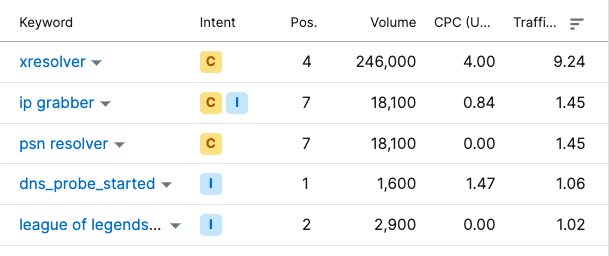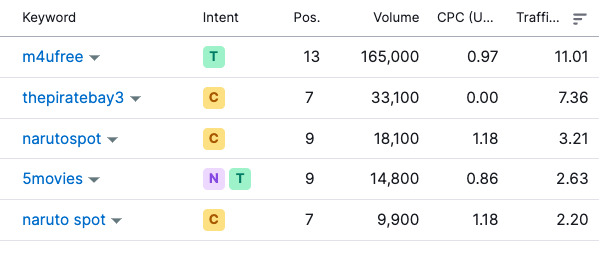An important part (although not the most important) of SEO for your website is adding backlinks, or in plain words – sites linking to your website(s). Now, I must say that as someone who deals quite extensively with SEO, backlinks may be one of the more confusing areas. So let’s start discussing them and some tests I’m going through.
Do You Even Need Backlinks?
As with most everything in marketing, the answer is “it depends.” Mostly, what you do need is other sites linking to your content. If you publish good enough content, they will link to you anyways over time. However, this is also a question of the chicken and the egg – you don’t have enough exposure to the content, so no one links to it, and due to this, you rank poorly.
Another thing to note is that Google has seen it all. That means that if I want to rank #1 in Google for “marketing operations,” it will not suffice to have 1,000 sites linking to my website with an anchor of “marketing operations.” There is, of course, the question of relevancy (are the links coming from relevant sites or not?), suspicious link-building patterns (such as having 1,000 sites linking to me with an anchor of “marketing operations”), and more.
I will revisit some of these issues in a future post, but I will say that backlinks acquisition is one of those activities where you can easily spend 10K/month getting absolutely no progress. Or get impressive results.
Popular Ways Of Acquiring Links
I will have a specific post about ways to acquire backlinks that I found effective (including some less used by companies), but I will say that there are several popular ways of obtaining backlinks. Sometimes you run this activity in-house; in other cases, you hire a company specializing in backlinks, and in other cases, this is handled by your SEO agency.
This should not come as a shock to you, but the easier you make it for yourself, the more you pay. I’ve seen agencies taking 1-1.5K USD for a backlink I was buying from another channel for 250USD. And in most cases, the links we acquired in-house were the best (also because they were usually bylines which were great for cross-channel marketing).
Getting back to the topic, here are some popular ways of acquiring links –
Guest Posts
In this case, someone writes a post on an existing blog or site, and within this post, there is a link pointing to your website.
Curated Links
In this case, someone reaches out to a website and requests that they add a link to your website from an existing site page. The good thing about this is that (theoretically speaking) this can be a link from a page you already know that is relevant to the keywords you want to promote.
The quality of both (and other link-building services) vary widely. You can get each for $5 off Fiverr, which is probably in some worthless link farming blog, part of a PBN, and you can get them as a crafted, highly relevant post on a “real” website for hundreds of dollars per post or curated link. And, of course, in many cases, you will be paying hundreds of dollars per backlink and still get poor results.
Examples From A Current Campaign
Here are some examples of why this is so tricky. The examples are from a currently running campaign we have with one of the link-building companies out there (I will publish more results about this experiment at a later stage). We paid 2K USD to get the 12 links (more about how we choose which pages and anchor text in a future post). The specific provider gives details about the sites you’re getting links from:
- Website URL
- Ahrefs DR, or Domain Rating, an index calculated by Ahrefs, looks at the quantity and quality of external backlinks to a website.
- Estimated Monthly Traffic (probably through Moz, SEMRush, or Ahrefs)
- Moz DA, or Domain Authority, is Moz’s score of how likely a domain is to rank high.
- Majestic TF, or Trust Flow, is a score based on the quality of websites linking to a domain.
The links we are getting for this specific campaign range between:
- DR: 20 – 60
- Traffic: 1,244 – 121,676
- DA: 17-59
- TF: 6-32
Overall, this seems like a nice blend of links to get, and we will track the progress. However, here are some things we worry about:
Relevancy
I wouldn’t call all websites we got links from total BS, but none of them is really precisely in our niche. Some are blogs, others are news websites around different topics, and some are even small vendors’ websites.
Traffic
Sometimes traffic is regarded as an important way to know whether websites are live, not just a PBN with fake articles. However, sometimes the traffic is for totally unrelated and worthless keywords. So as an example, I was looking at some of the high-traffic websites in the list of sites we got in SEMRush.
Here are the results of the top 3:
Top website:
- Site 1: according to the vendor, traffic is 121K. According to SEMRush, it’s 66.6K. Traffic is mainly from US sources (which is good). One of the most important things to look at is what brings the traffic, and in this case, it is keywords that are not very relevant to our niche but still meaningful and has some CPC:

- Site 2: according to the vendor, traffic is 50K. According to SEMrush, it’s 25K. Traffic is once again mainly from the US. And as for the top keywords:

As you can see, these are generic keywords without any CPC (meaning no one actually bids for them when paid). Not very impressive.
- Site 3: According to the vendor, it’s 33K. According to SEMRush, it’s 31K. Keywords are pretty meh, at least for us, but not as bad as the previous site. Traffic is mainly from the US as well.

Going Forward
Going forward, I will update you about the relevancy of the actual guest posts and, as time allows, about the progress we see (or don’t see) due to the posts. I will also update you about other campaigns we’re having and perhaps even benchmark them.